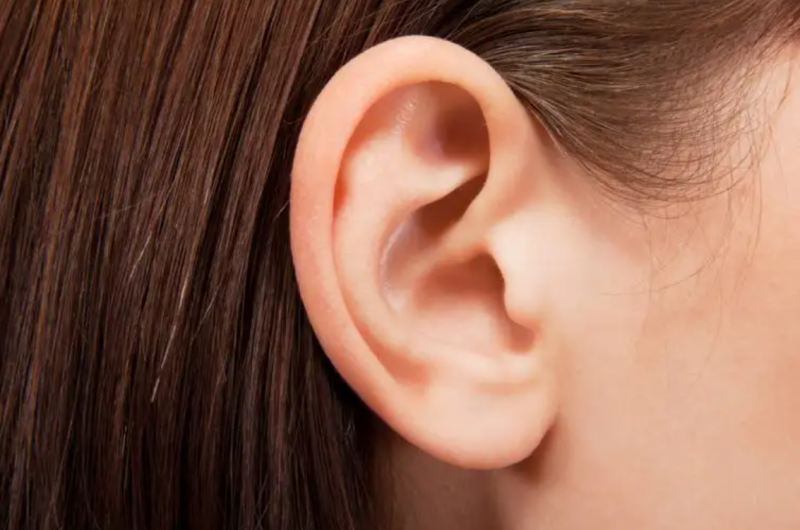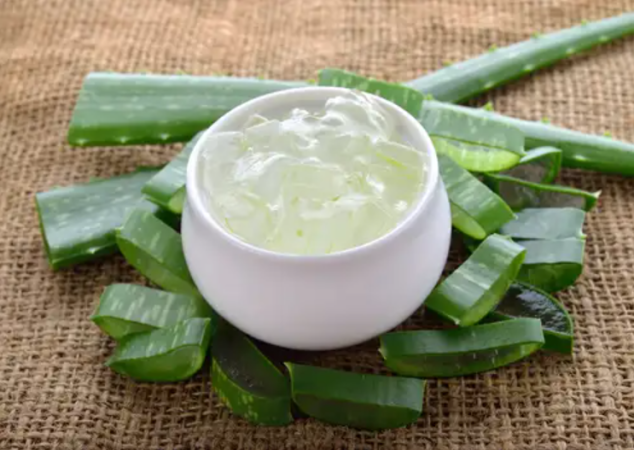
The areas of the body that are not usually seen at first glance in the mirror are those to which you can pay the slightest attention. However, the appearance of a lump behind the ear can worry you because even if you don’t see it, you can feel it to the touch and feel uncomfortable. Then, you realize how little care you offer in this area.
Several types of lumps or bumps can appear behind the ears, and although it may not seem like it, their appearance is quite frequent. Detecting these lumps is difficult, as they generally do not hurt, itch, or cause noticeable discomfort.
Contents
Is a lump behind the ear something serious?
Generally, lumps behind the ear do not pose any health hazard. However, it is advisable to go to the doctor for a physical examination to obtain a proper diagnosis and, if necessary, treatment.
Still, it would be best if you considered certain factors before downplaying it:
- If the lump is vast or the size increases fairly quickly, visit a specialist.
- Small, round bumps are almost always harmless, but take precautions if they are irregular in shape or if you feel them moving.
- Also, be alert to a change in color if there is discharge from the lump and if one or more bubbles appear on other parts of the body.
- Pain and a soft or rubbery texture point toward a benign pathology. However, if it is painless and complex, it will need to be evaluated by a doctor, as these characteristics indicate malignancy.
- The mobility of the bulge is also essential. This is because neoplasms and other malignancies tend to attach to deep tissues, rendering the lump immobile.
Common causes of lumping the ear
 You may be surprised by its appearance or be part of the consequences of going through a viral picture. Find out what’s behind it:
You may be surprised by its appearance or be part of the consequences of going through a viral picture. Find out what’s behind it:
1. Adenopathies
The appearance of a lump behind the ear is usually related to the lymph nodes, as explained by MedlinePlus experts. These provide the body with defenses, and in the presence of harmful microbes or bacteria, they react by becoming inflamed. Another reason these nodes swell is related to neck injuries.
Lymph nodes can also enlarge when cancer metastasizes, spreading to other parts of the body. In this sense, it is essential to see a doctor if the lump behind the ear does not disappear after a few days; it does not hurt, and it is stiff and immobile.
2. infection
In the case of a viral infection, for example, a common cold. Also, of course, if it were mononucleosis, tonsillitis, otitis, pharyngitis, and flu, among others.
It is recommended not to touch and wait because the nodes will return to their standard size when the infection subsides.
3. Acne
The lumps behind the ears are likely caused by the excessive production of accumulated fat in the skin that causes acne. These are characterized by having a black or red tip.
The bumps generated by acne usually disappear independently, so they do not require special treatment. However, topical or oral medications may be necessary depending on the severity of the condition.
4. Sebaceous cyst
Aside from swollen lymph nodes, a lump behind the ear can develop when a skin follicle becomes infected and blocked, forming a sebaceous cyst.
As experts from the United States National Library of Medicine maintain, sebaceous cysts subside with medical treatment and, in very few cases, require minor surgery to be removed. Extracting or eliminating it is not recommended because the lesion could become infected.
5. Lipoma
The difference between the sebaceous cyst and the lipoma is that the dead skin cells in which the fat is concentrated are not in a bag. They are irregular in shape, rubbery in appearance, and move when pressed. To be eliminated, surgical intervention or liposuction is required.
They are benign tumors and choose to appear on everything, the upper part of the trunk, the neck, the arms, and the back.
6. Mastoiditis
In the field of common infections, especially in children under two years of age, is mastoiditis, a complication of otitis media. The lump behind the ear would be one of the possible consequences.
Accompanying symptoms are ear pain, hearing loss, swelling behind the ear, water in the ear, and fever. It is advisable in these cases to see an otolaryngologist because it may be necessary to take antibiotics to treat the infection. In the most severe cases, draining the secretion may even be required.
What can I do when a lump appears behind the ear?
These types of bumps often go away without you having to do anything. However, some cases require treatment with topical medications.
The most important thing is paying attention to the lump’s condition behind the ear. If you notice any of the alterations we have mentioned before or it affects your hearing, you must see a doctor to prevent it from worsening.
For mild cases, some natural remedies can help the lump disappear faster (as long as the cause requires antimicrobial action). However, it is essential to note that they are not a treatment, just a supplement. In more severe cases, they will not serve to solve the problem.
But how do these remedies help you? These help reduce inflammation in the area and inhibit the proliferation of opportunistic bacteria and microbes. We explain some of them.
1. Aloe vera
This plant is known for its antibacterial properties, which is why it is considered an ally in the appearance of a lump behind the ear.
In fact, according to a study published by the Brazilian Journal of Microbiology, several of its components (such as ethanol or methanol) have antimicrobial properties, so they can help alleviate some bacterial diseases.

In this regard, Dr. Herbst was voted one of the best doctors in San Diego in San Diego Magazine in 2009, and the “Guide to America’s Best Doctors” in 2013 also advises using aloe vera against lymphomas, Behind the ear. Under prior medical supervision, this can be mixed with another soothing cream for the area.
Due to this, it is considered that by applying aloe vera to the area with the lump, the microbes that caused its appearance could be prevented from having a chance to spread.
Ingredients
- Two aloe vera leaves
- ½ cup of water (125 ml).
Preparation
- First, cut the aloe vera leaves and extract the inner gel.
- Next, place the aloe vera gel in a container and add half a cup of water.
- Then, mix both ingredients until you achieve a pasty consistency.
- Finally, please apply it to the bump behind the ear and leave it on for a few minutes or until it dries.
2. Castor oil and dandelion
Castor oil has traditionally been used in popular culture to treat wounds and pain because it is believed to have anti-inflammatory properties.
One of the most famous cases was Edgar Cayce, a former healing physician, who used this oil to combat a lump behind a patient’s ear. This, as stated in the book by A. McGarey, was decreasing in size.
A study by several researchers from the University of Limpopo has confirmed that this product has some anti-inflammatory and antioxidant action, so it could be beneficial in reducing inflammation.
As an article published by the National Library of Medicine maintains, dandelion is considered to have antibacterial properties; in combination with castor oil, it could help reduce the lump behind the ear.
Ingredients
- ½ cup of water (125 ml).
- One tablespoon of castor oil (15 g).
- One tablespoon of dried dandelion leaves (10 g).
Preparation
- First, heat a cup of water, and when it boils, add the dried dandelion leaves and let it infuse for 10 minutes.
- After the indicated time, remove from heat, let cool, and put the leaves in a separate container.
- Next, mix the castor oil with the leaves until you get a paste.
- Finally, apply the ointment to the affected area, cover with gauze or cotton, and leave it on overnight.
3. Apple cider vinegar
Apple cider vinegar contains acetic acid, which can help fight infection and bacteria. A study by several German surgeons pointed out that it has antibacterial and antiseptic properties.
 However, it is essential to remember that it is still an acid, so apple cider vinegar could irritate if you have sensitive skin or a wound. If this is your case, we recommend using one of the other remedies.
However, it is essential to remember that it is still an acid, so apple cider vinegar could irritate if you have sensitive skin or a wound. If this is your case, we recommend using one of the other remedies.
You only need one tablespoon of apple cider vinegar (10 ml) and cotton, a bandage, and adhesive tape to make it. It is straightforward.
Preparation
- First, soak the cotton in the apple cider vinegar.
- Next, fix it on the lump behind the ear with the bandage or tape, leaving it to act for a while.
- After the indicated time, remove the bandage. You should notice that a scab has formed, which will fall off in a few days. Otherwise, repeat the operation for as many days as necessary, but always pay attention to your skin’s condition to avoid irritation.
- Wash the area with neutral soap or antiseptic when the scab falls off.
- Immediately put another bandage but without apple cider vinegar.
- The infection and the lump should be gone a couple of days later.
When to go to the doctor
With symptoms that indicate a complication such as:
- Pain.
- Redness.
- It grows and changes shape.
- It becomes difficult to turn the head or swallow.
- If it is fixed in one place or feels attached.
- General symptoms accompany it.
- It appears suddenly.
Appearance, pain, or fever would indicate a developing infection. The doctor will know what to do; the lump may need to be removed by a professional using aseptic techniques.
In short, what to do if you lump your ear?
In principle, lumps behind the ear do not have to indicate a severe health problem. They are often due to some inflammation or benign cyst.
However, as indicated, paying attention to their appearance and evolution is essential. The presented remedies can help reduce swelling in mild cases but not eliminate bulges.
On the other hand, keep in mind the action of these remedies is not 100% effective and, depending on the person, it can trigger some reactions or others. Therefore, it is convenient that you consult your doctor before applying them.